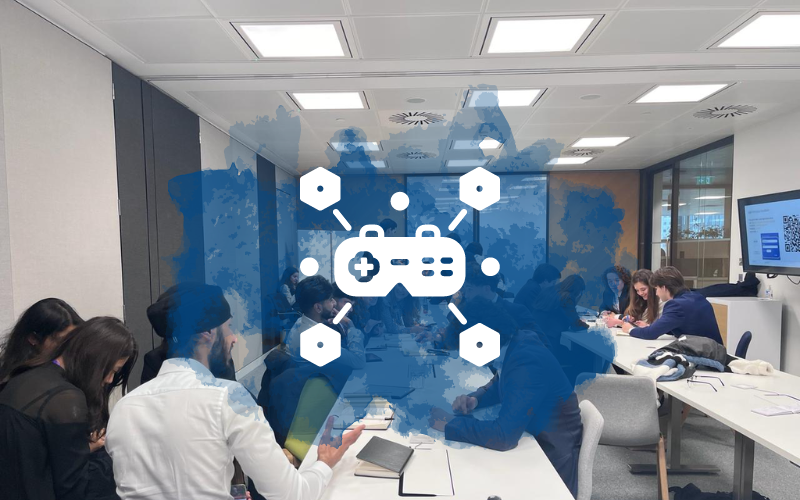Why Are More Companies Shifting to Gamified Learning Environments?
Gone are the days of dry lectures and monotonous training manuals. Companies across the UK are ditching the traditional and diving headfirst into the world of gamified learning. But why the sudden shift? Buckle up, because we're about to embark on a journey exploring the compelling reasons behind this exciting trend.
Unleashing the Power of Play: Gamification 101
Before we delve deeper, let's establish what gamification truly entails. It's not about turning your workplace into a giant arcade. Instead, it's about incorporating game-like elements – points, badges, leaderboards, challenges – into the learning process. Think of it as sprinkling fairy dust on your training materials, making them inherently more engaging and interactive.
"Gamification is the use of game design elements in non-game contexts." - Karl Kapp, Author of "The Gamification of Learning and Instruction"
Why the U.K. Workforce is Hooked on Gamified Learning?
Now, onto the real question: why are gamified learning environments becoming the new norm? Here's a breakdown of the key benefits:
- Amplifying Learner’s Engagement: Let's face it, traditional training can be, well, traditional. Gamification injects a dose of fun and healthy competition, turning learners into active participants rather than passive observers. A study by Applied Learning found that gamified training resulted in a 60% increase in engagement.
- Knowledge Retention Gets a Boost: Imagine struggling to recall information learned weeks ago during a snooze-fest of a training session. Gamified learning tackles this head-on. The interactive nature and reward system solidify information in learners' minds, leading to better knowledge retention.
- Motivation Takes Centre Stage: Gamification taps into our inherent desire for achievement and recognition. Points, badges, and leaderboards create a sense of accomplishment, motivating learners to push themselves further and strive for mastery.
- A Learning Oasis for All: Gamified learning caters to diverse learning styles. Some may enjoy the competitive edge of leaderboards, while others thrive with collaborative challenges. This flexibility ensures everyone gets the most out of the training experience.
- Data-Driven Insights for Continuous Improvement: Gamified platforms provide valuable data on learner performance, allowing companies to identify areas where employees struggle and tailor training accordingly. This data-driven approach fosters continuous improvement within the learning and development process.
Real-World Examples: Gamification in Action
Let's see how some leading companies in the UK are leveraging gamification:
- Marks & Spencer: M&S implemented a gamified platform to train new employees. The platform uses role-playing scenarios and challenges to equip staff with essential customer service skills. The results? A 20% reduction in training time and a significant boost in employee confidence.
- HSBC: HSBC adopted a gamified approach to train their sales team. The interactive platform simulates real-world sales scenarios, allowing employees to hone their negotiation and communication skills. This resulted in a 15% increase in sales conversion rates.
These are just a few examples, but they showcase the transformative power of gamification in corporate learning.
Gamification: A Trend with Staying Power?
The rise of gamified learning is not a passing fad. With its proven ability to boost engagement, knowledge retention, and motivation, it's here to stay. As technology evolves, so will gamification techniques. Expect to see the integration of virtual reality (VR) and augmented reality (AR) for even more immersive and interactive learning experiences.
Frequently Asked Questions (FAQs)
Q: Is gamification suitable for all types of training?
A: Gamification can be highly effective for various training topics, but it might not be the best fit for highly technical or compliance-based training.
Q: How do I get started with gamified learning?
A: Several learning and development companies specialise in gamified learning solutions. Research different providers to find one that aligns with your specific training needs and budget.
Q: What are the potential downsides of gamification?
A: Overly competitive gamification elements can lead to discouragement for some learners. It's crucial to strike a balance between competition and collaboration.
Remember: Gamification is a powerful tool, but it's just one piece of the puzzle. Effective training programs should also incorporate clear learning objectives, engaging content, and opportunities for practical application.
Embrace the playful revolution and watch your learning and development initiatives soar!
How MDA Training Can Help You Gamify Your Learning?
Looking to incorporate gamification into your training programs but don't know where to begin? Look no further than MDA Training! We offer a comprehensive suite of services specifically designed to help organisations develop engaging and effective gamified learning experiences.
From crafting custom simulations and challenges to incorporating role-playing activities and leaderboards, MDA Training's experienced team can guide you through the entire gamification process. Our data-driven approach ensures your gamified training programs not only captivate learners but also deliver measurable results.
So, if you're ready to inject some fun and boost your training ROI, consider partnering with MDA Training to unlock the power of gamification. Contact Today!









